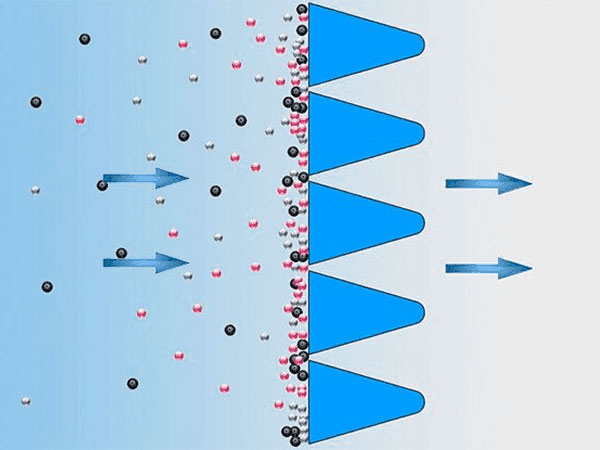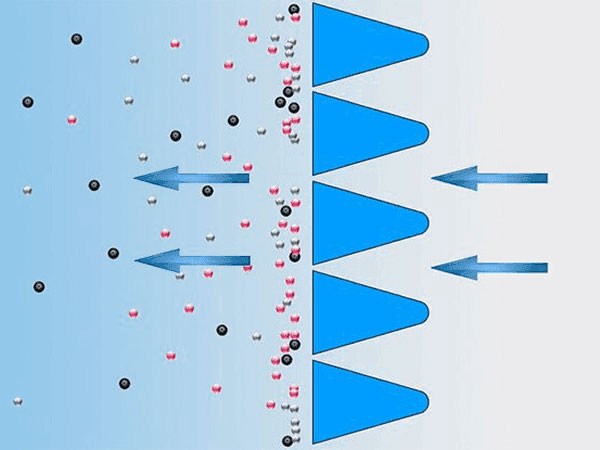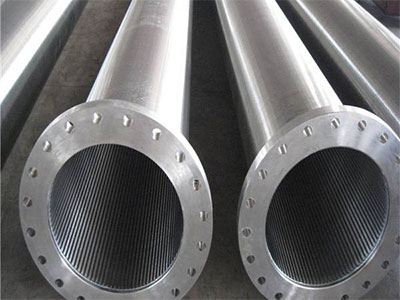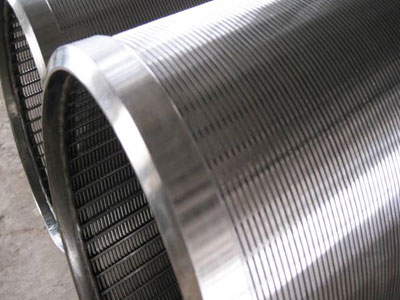home Wedge Wire Screen Working Principle, Categories and Advantages
Wedge wire screen is a metal mesh element widely used in screening, filtration, dehydration and desliming operations for sieving and filtration. It has high strength, rigidity and load carrying capacity and can be made into a variety shapes of rigid screening filters.
The wedge wire screen consists of surface profiles and support profiles. Surface profiles, usually v-shaped wires, are wrapped and welded onto support profiles. The distance between the surface profiles is controlled very accurately, as it forms the slot through which the filtrate flows. The direction of the flow is determined by the position of V-shaped wires (surface profiles) in relation to the support profiles. Wedge wires screens are either flow-out-to-in or flow-in-to-out.


Qiusuo wedge screen adopts international advanced welding technology, which has considerable advantages in terms of surface smoothness, gap uniformity and product quality, thus ensuring our products perform better quality and higher efficiency in use!
As we all know that wedge wire screen cylinder has various connection methods for different applications like flange connection, thread connection and welding connection. What is the difference between these connection methods? Today, we would like to introduce the advantages and disadvantages of different connection methods for your reference:

Flange connection is a detachable method of tight connection. It employs two flanges to connect pipes, valves, devices and other components into a tight piping system. It is easy to disassemble & process and forms a reliable connection to withstand low pressure or high pressure according to different application requirements. It is relatively stable in a vibrating environment.

Thread connection is one of the most widely used connection methods. It is suitable for medium and low pressure environments as the threaded screen is relatively stable without the need of worrying about slight leakage. It is especially suitable for occasions that wedge wire screen will not be disassembled for a long time. However, it is not recommended under vibrating and shaking conditions.

If we adopt welding connection, there is no need to consider disassembly. It is suitable for occasions where temperature and pressure change periodically. High temperature and high pressure may cause the flange and the thread to loosen or high frequency vibration; therefore, welding is the best choice in high temperature and high pressure environments.
When designing a water intake system, water intake screen is a crucial element to a well-designed system. The working condition of the entire water intake system depends on the functionality of the water intake screen. If the water intake screen is properly designed, it will establish an effective system that will reduce the maintenance costs over the lifespan of the system. Key factors for a properly designed water intake system are:
Fortunately, wedge wire screen can effectively meet all these requirements for water intake screen if properly designed. With years of design experience, we can design wedge wire screens perfectly meet your water intake demands. Here we would like to share what we have learned from successful designs.
FThere are some basic recommendations you need to consider in design.
Early communication : In the design phase, you can contact and communicate with us as early as possible to prevent some common problems that may appear later. We will learn from previous experience to assure that you choose the correct intake design, size and performance parameters, and identify if there are any special requirements for wedge wire screens. In short, reviewing these design requirements with us as early as possible can eliminate the expensive costs caused by installing an improper designed wedge wire screen.
Understand the type of water intakes : There are several different types of water intake screens on the market. Knowing the types of screens and their advantages can help you design the most efficient system for your application. The three most common water intake screens are listed below:
Drum screen : Drum screens are used in quiet waters where the water flow passing through the screen is minimal. This will include lakes and reservoirs with stable water conditions and low flow rates. Drum screens are also ideal for space limited conditions. The screens can be installed vertically or horizontally to prevent debris from accumulating on the screen surface. Drum screen is also the most economical form of water intakes.
The most common installation is a T-intake screen. They are usually designed for cooling plants, pulp and paper mills, and other industrial facilities that need to take large amounts of water from lakes, rivers or oceans. T-intake screen is designed to withstand various water conditions including the harshest environments. We offer flexibility in the design of the T-intake screen to accommodate special conditions where the device will be installed. For example, this water intake screen can be designed with a conical end to deflect debris that flows towards it.
The half-barrel filter is designed for shallow water conditions. It provides the same screen flow characteristics as a larger T-intake screen. However, its half size allows it to be placed at the bottom of streams and rivers where T-type intakes do not work properly.
Water depth: The depth of water at the desired location where the water intake screen is installed is one of the main factors to be considered when properly sizing a water intake screen. The diameter of T-intake screen and drum screen shall be 2 times of the minimum water depth. The half-barrel screen only requires a submergence level of six inches. When designing the water intake, the maximum submergence level needs to be considered to adapt to the water pressure at the installation site. Finally, if the water depth at the intake location varies, multilevel intake is an ideal option for flexibility.
Material type : There are four basic water conditions that determine the material for an intake screen.
| Water Conditions | Materials Recommended |
| Fresh water without biological pollution issues | SS 304 is the most economical material used in fresh water conditions. |
| Brackish water | SS 316 is recommended to improve corrosion resistance. |
| Fresh water with biological pollution concerns | SS 2205 offers excellent resistance to biological pollution in fresh water. |
| Salt water | SS 2507 not only provides great corrosion resistance in salt water, but also prevents biological pollution. |
Capacity : When you need us design a water intake screen, we will ask you two very important questions that will contribute to the successful operation of the system:
Question 1: How much intake capacity do you need?
This is the minimum capacity needs to be designed to meet the current water demands.
Question 2: Are there future expansion plans that require additional capacity?
If water consumption needs to be increased, you may consider it in the current design so that the intake screen can handle additional capacity when needed.
Understanding and following these helpful guidelines will provide a good starting point for developing an efficient intake screen and increasing the reliability of the intake screen.